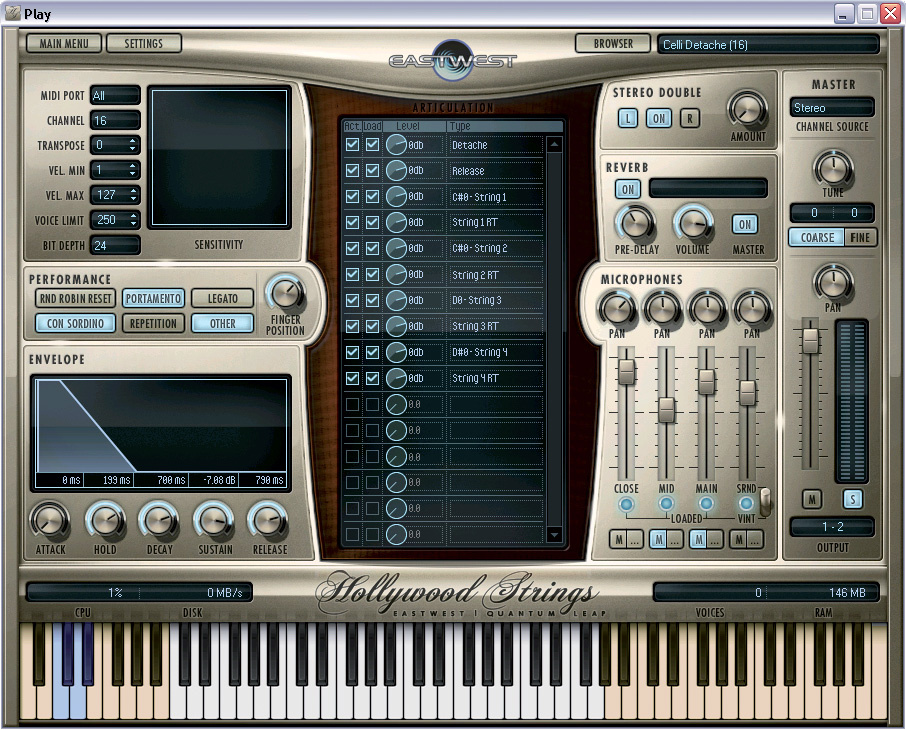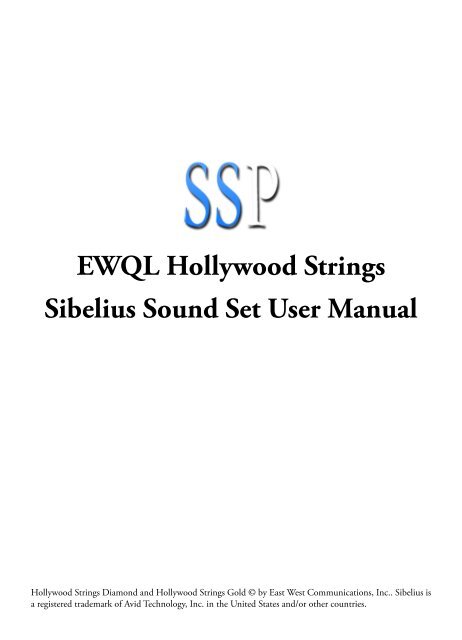
I was left feeling that either I need a lot more time to tame this library into a way of working quicker with it within this area of slower, more sensitive composition, or that the problem lies inherent in its samples that may have been recorded too precisely for my taste. For these, lets say, non-bombastic orchestral arrangements, I found the overall impression a little underwhelming.

I found the Player 5 engine tricky to work with: a trait I have heard grumbled about from many others! I could get used to it of course but even during the intense week I spent working with HO I couldn't help feeling that the end result for these quieter pieces didn’t sound as good as I had hoped. However during that week I found HO needed quite a lot of work during the more subtle musical passages where longer samples are exposed to get them to sound close to how I wanted them to sound.
EAST WEST STRINGS FULL
Of course I immediately heard the difference in playability and the greater range of articulations was in another league, needless to say sonically the samples themselves are recorded with greater sonic fidelity plus one has full control over mics and stereo placement. Recently I spent a week on my own at a friends studio trying out East West Hollywood Orchestra composing fresh music and transcribing some already written pieces of mine.

Oh! yes! and my peers have often reminded me how I have also overlooked the fact that I have grown too used to spending quite some time blending mixtures of instruments from both libraries in the overall ambient mix!Ī lot of things I mention here hint to production technique topics no doubt well covered in generously informative forums such as this one but things that I have been urged to address fortunately only by my peer composer friends and not by my clients!. Then there is the lack of true legato patches that more often than not forces my having to employ various time consuming tricks to make the arrangements sit musically. The abrupt jump in timbre between velocity 89 and 90 in the Kontakt brass patches for example has always been a frustrating one to deal with both when playing in and editing an arrangement. One of this Miroslav/Kontakt combo's weak points is that their samples dynamic layers and levels of crossfading between those layers when composing on the fly are rather limited. Also I've always been a believer that working with less tools brings out the best in a composer and accordingly have invested in quality studio kit over the years that captures what I write well but least interferes with the creative writing process. Yes! you may well wonder why I have never upgraded from these libraries who's samples are well over a decade old! Call me a luddite! but I guess I'm just one of those musicians/composers who upgrades majorly in one fair swoop rather than jump on the bandwagon of increasingly frequent plugin product releases. However, as much as I have grown used to a certain way of working round their limitations I am now increasingly finding the amount of that work needed to get my compositions to decent presentable form for my clients on time is now proving too stressful to achieve.

I was about to post this thread under a different heading when I noticed EastWest have Hollywood Orchestra bundled with its Hollywood Solo Instruments libraries now on sale for an astonishing $372 ! Hence the title: "What's the rub?"! I suspect at this give-away price they must be imminently releasing a new orchestral library no?įor over a year now I have been deliberating investing in Spitfire's Symphonic Orchestra Complete package.įor longer than I'd care to admit I have been working with Miroslav Philharmonik (original) and the basic Kontakt library for most of my classical scoring mock-ups and occasional mastered projects.
EAST WEST STRINGS PRO
I am a pro composer/songwriter/musician working mainly in film/TV.


 0 kommentar(er)
0 kommentar(er)
